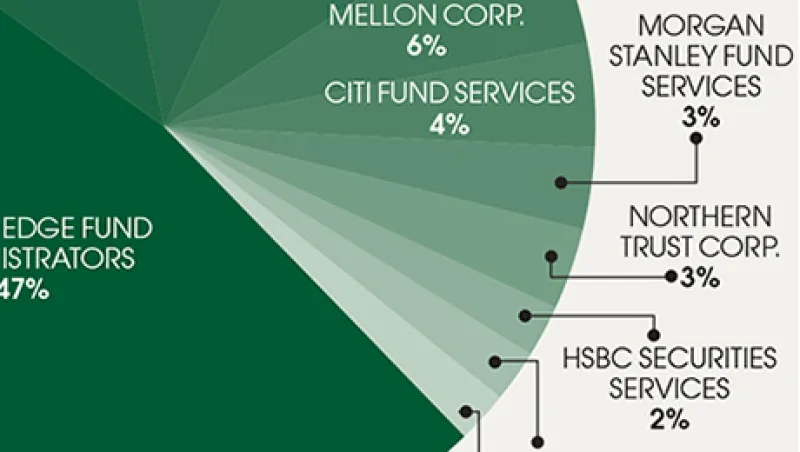Third-party administrators can thank the financial crisis for boosting their hedge fund business. New and cumbersome regulatory reporting requirements played a role, as did investors’ growing insistence on independent oversight. Now administrators are looking at what else they can offer to keep hedge fund clients around. The push is on for them “to deliver much more granular levels of detail in a much quicker time frame,” says Joseph Holman, CEO of New York–based Orangefield Columbus, which has some $13 billion in hedge fund assets under administration.
Last fall Orangefield Columbus launched its “flurry” system (officially, FLRE, for “fund-level reporting environment”), which lets portfolio managers assign trades to categories, such as an investment theme or a tax lot, to keep track of each security’s purchase and sale, and to analyze portfolios with end-of-day, on-demand data. “It goes beyond the traditional ways of breaking out a portfolio by geography, industry type or currency,” Holman says.
A manager might buy the same stock several times for different reasons, each of which can be coded into Orangefield’s system, he adds. Or a hedge fund might get a question from an investor about why it made or lost money during a period “that’s not the traditional month-to-month or week-to-week,” Holman says.
“Right now the industry is doing some daily reporting, but it will continue to grow over time,” says Steve Farlese, head of the global service delivery team for Bank of New York Mellon Corp.’s alternative-investment services business, which has about $600 billion under administration with hedge funds and funds of hedge funds.
Administrators are 60 percent of the way toward meeting hedge funds’ appetite for “end-of-the-day files they can feed into their risk engines,” Farlese estimates. This information isn’t just for hedge funds, he says; their clients also want more transparency into holdings and possible risk exposures. By year’s end BNY Mellon hopes to have made strides in providing daily reports on securities and on the client-centric functions that fall into the transfer agency category, such as trade flows, fees and commissions, Farlese says.
Custodian banks need to produce more-timely data for their own risk management purposes, says Paul Rowady, head of data and analytics research at Tabb Group, a New York–headquartered research and advisory firm. It makes sense to point some of these new capabilities back at clients so hedge fund managers can “improve their perspective on their own capital and their own risks,” he explains.
But hedge fund investors also want to get more information directly from an independent third-party administrator, says Scott Carpenter, global head of client relationship management and strategy for Boston-based State Street Alternative Investment Solutions, whose hedge fund assets under administration total $782 billion. “Our next phase of pushing information to our managers relates to the investor side,” Carpenter says.
In early 2013, State Street launched an investor portal that has since moved beyond static documents like capital statements to its second phase, which allows users to request historical data such as performance over a specific time frame. Phase three will let investors fill out online subscription and redemption forms that State Street routes to hedge fund managers. “That’s something the industry has to get to eventually,” Carpenter says, noting that subscriptions and redemptions still involve “a tremendous amount of back and forth” with paper forms.
Hedge fund administrators also keep building out their existing platforms. For example, in the next few months SS&C GlobeOp will add several new asset classes and capabilities to its GoTrade+ offering, including equity real estate investment trusts, says chairman and CEO William Stone. The Windsor, Connecticut–based firm, which has $423 billion in hedge fund assets under administration, launched its REIT servicing group in April with mortgage trusts and expects to add equity REITs in the third quarter. SS&C GlobeOp has a long history with the REIT market, but now it has developed the technology to produce fully auditable electronic accounting and reporting forms that will help eliminate paper spreadsheets, Stone says.
Holman of Orangefield Columbus thinks administrators will eventually create software that enables portfolio managers to look at their historical data from a variety of angles — what if they’d bought more of this stock, for instance, or sold this security sooner It’s “the logical next step,” he contends.
Get more on hedge funds.






